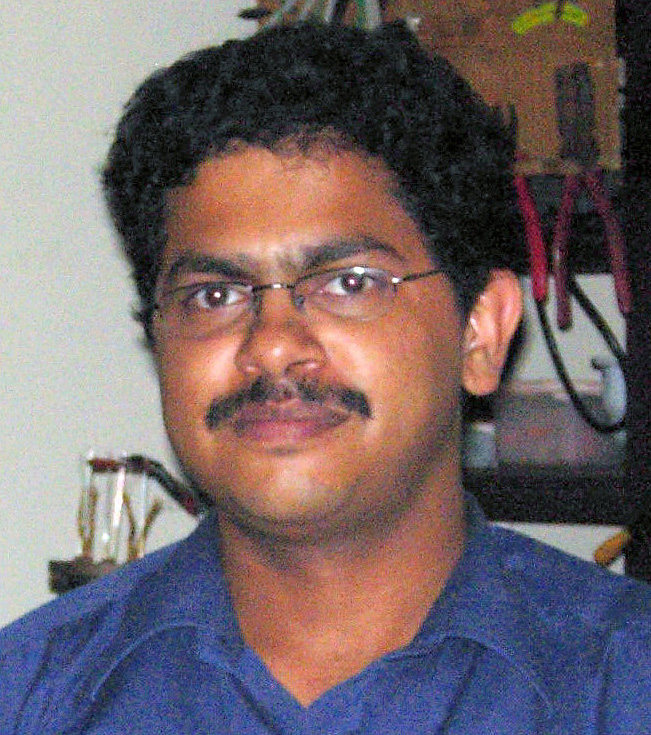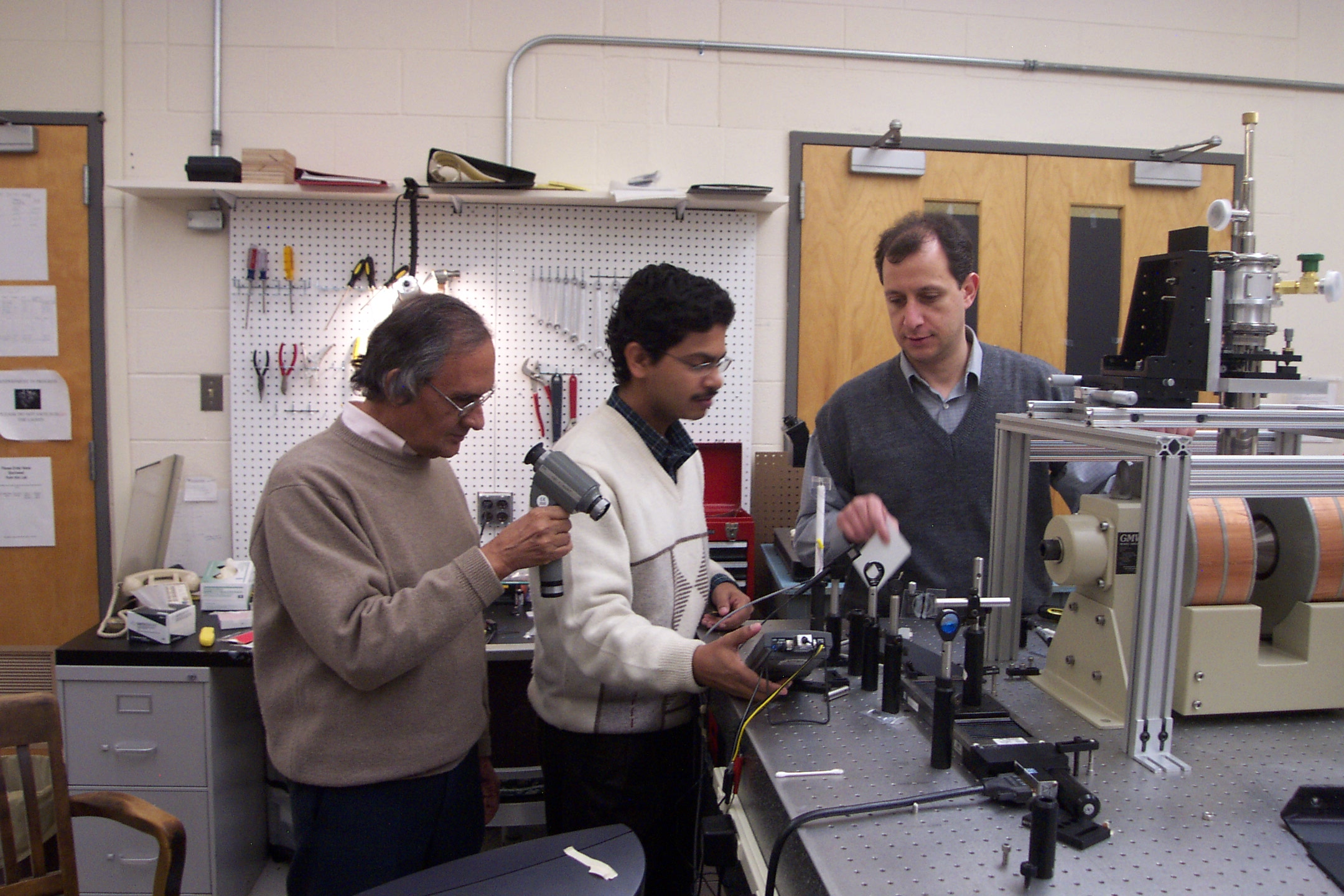Research Spotlights
Past IMI-NFG Research Exchange (RE) Participants
 Soumen Basu:
Soumen Basu:
With the encouragement of my supervisor Prof. D.Chakravorty and the support of the International Material Institute for New Functionality in Glass through its research exchange grant, I was able to conduct research work for six months in the laboratory of Penn State University and Lehigh University under the guidance of Prof. Himanshu Jain and Prof. Venkat Gopalan. This research experience exchange program provided me with the opportunity to perform non-linear optical measurements on glass containing ferroelectric and ferromagnetic nanocomposites. I gained lively suggestions on measurement of non-linear optical materials from experts in the field.
The glass composition used for the present program is14Na 2 O,26BaO,26TiO 2 ,16B 2 O 3 ,17SiO 2 , 1NiO/Fe2O 3 (in mol %).The melt-quenched glass obtained was then subjected to heat treatment at 863K for different time, the nucleation temperature measured from DTA data for the crystallization of barium titanate. Glass containing barium titanate nanoparticles were then subjected to reduction treatment at 673K for different time with flow of hydrogen gas to precipitate the metal nanoparticles. Using rotating-compensator spectroscopy elipsometry the (linear) refractive index n and the extinction coefficient k for the sample containing nanocomposites and also base glass were determined. Samples measured by spectroscopic elipsometry at angles of incidence T i = 45 o , 60 o , and 75 o over a spectral range of 0.75 – 6.0 eV. Parameterized Optical dielectric functions determined by: e = e 8 + CL + Pole.

This research experience exchange program helped me a lot in understanding the techniques of non-linear optical measurement of nanocomposites materials that we prepare as a routine job in our laboratory. Through this research exchange experience, I was able to take advantage of the specialization of each university. I was also exposed to the state-of-the-art-technology of laboratories in the US and the American culture, which indeed is a wonderful experience for me.
|
This material is based upon work supported by the National Science Foundation under Grant Number DMR-0844014. International Materials Institute Sinclair Laboratory, 7 Asa Drive, Bethlehem, PA 18015 Tel: 610-758-1112 · e-mail: imi@lehigh.edu Website by Zephyros |
